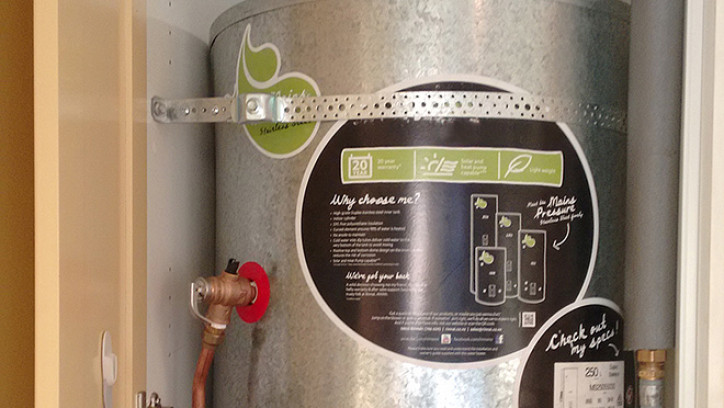Hot water cylinders and pipes
Last updated: 9 August 2023

Check you're not losing heat from your cylinder and pipes, making your hot water heating inefficient.
Heat loss from cylinders
For any type of hot water storage, energy is lost through the walls of the cylinder even if no hot water is being used. This is called 'standing losses'.
Although modern electric cylinders are better insulated than older cylinders, even modern cylinders will benefit from extra insulation.
Gas hot water cylinders can't be fully insulated as they have an exposed flue in the middle where the flame heats the water.
Hot water cylinders are now sometimes installed outside the house to save space. The cold and rain outside mean that the cylinder insulation needs to be particularly good.
Heat loss from pipes
There are requirements in the New Zealand Building Code to insulate the hot pipes coming out of the hot water cylinder. However, in older houses pipes from hot water cylinders are often not insulated at all and lose a lot of energy.
You can buy foam tube pipe insulation from hardware and plumbing stores very cheaply. The first metre of pipe from the cylinder is the most important to insulate, but if you can, it's worth insulating the full length. Installation can be difficult as pipes are often hidden inside walls.
Pressure
Low-pressure cylinders are still common in New Zealand and tend to be smaller (135 litres) and are generally older. If you regularly run out of hot water, this is probably what you have. If they have been poorly installed, low pressure hot water systems often can only run one hot tap at a time with reasonable pressure. They may require a header tank in the roof space, or have a pressure limiting valve in the system.
Mains-pressure cylinders are more expensive, give faster flow and allow you to use a wider range of taps. But this can increase the amount of water and energy used. Mains pressure systems can be made more efficient by using water-efficient showers and taps. These are designed to deliver the water effectively and comfortably, but use less water. High flow showers do not always equate to better showers.
Efficient use of water has more information.
There are some low-pressure cylinders, which give you high-pressure delivery. These are called indirect mains pressure cylinders. They are often operated at high temperatures, so standing losses can be high.
Size
A cylinder should hold enough water so that it rarely runs out under normal use. A family of four will typically need at least 180 litres' capacity.
Cylinders for solar and wetback systems
Some cylinders are specially designed to work with solar systems and wetbacks. Other cylinders don't work well in these situations. Ask your installer if yours is suitable for retrofit because high temperatures can damage them.
Wetbacks must be vented, so cannot be connected directly to a high-pressure supply. They can be connected directly to a vented, low pressure cylinder, or be connected to a vented heat exchanger that heats a high pressure supply.
For solar hot water, it's better to have a larger cylinder as you will be less likely to run out of water, and for best performance, the heating element should be in the middle – not the bottom – of the cylinder.